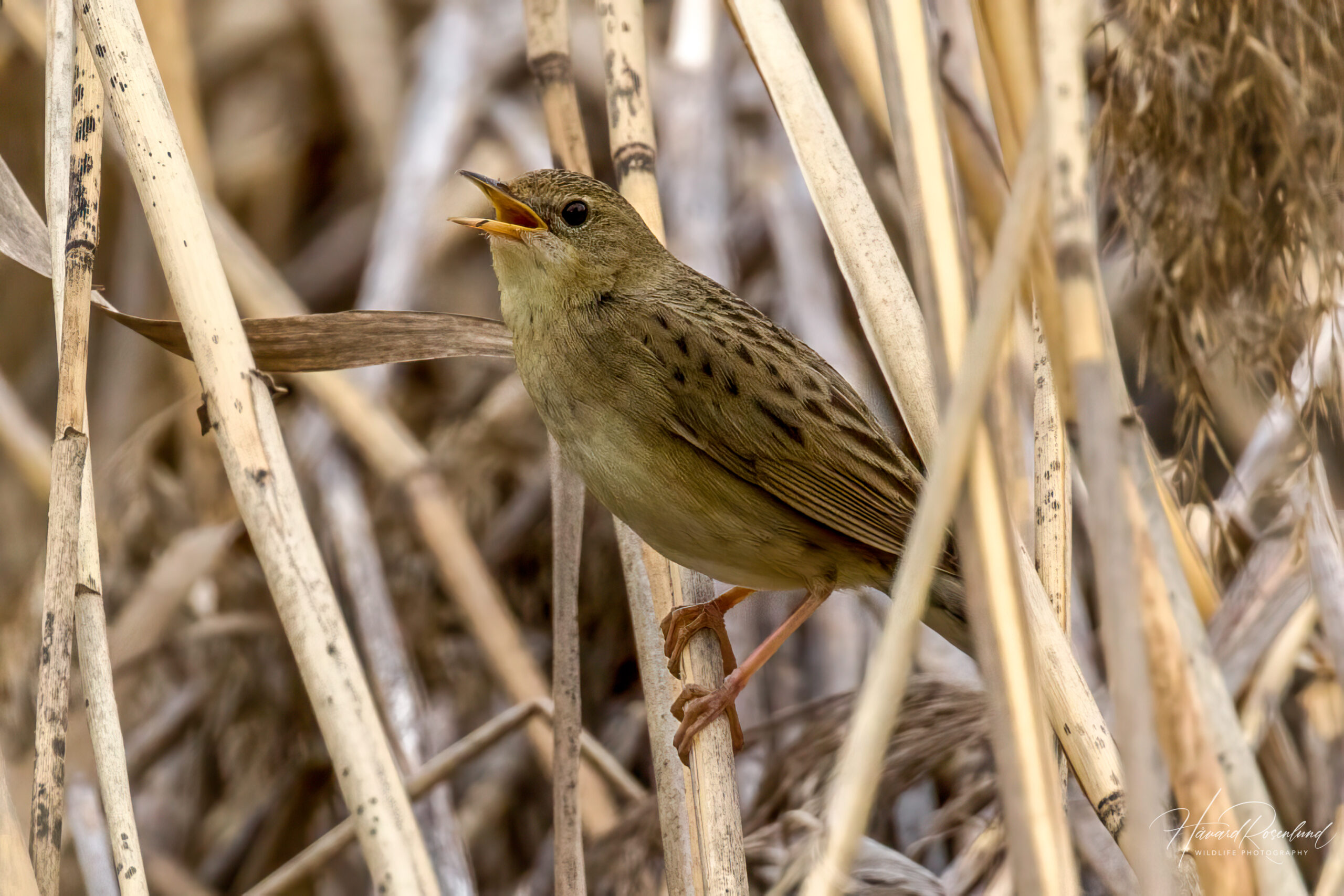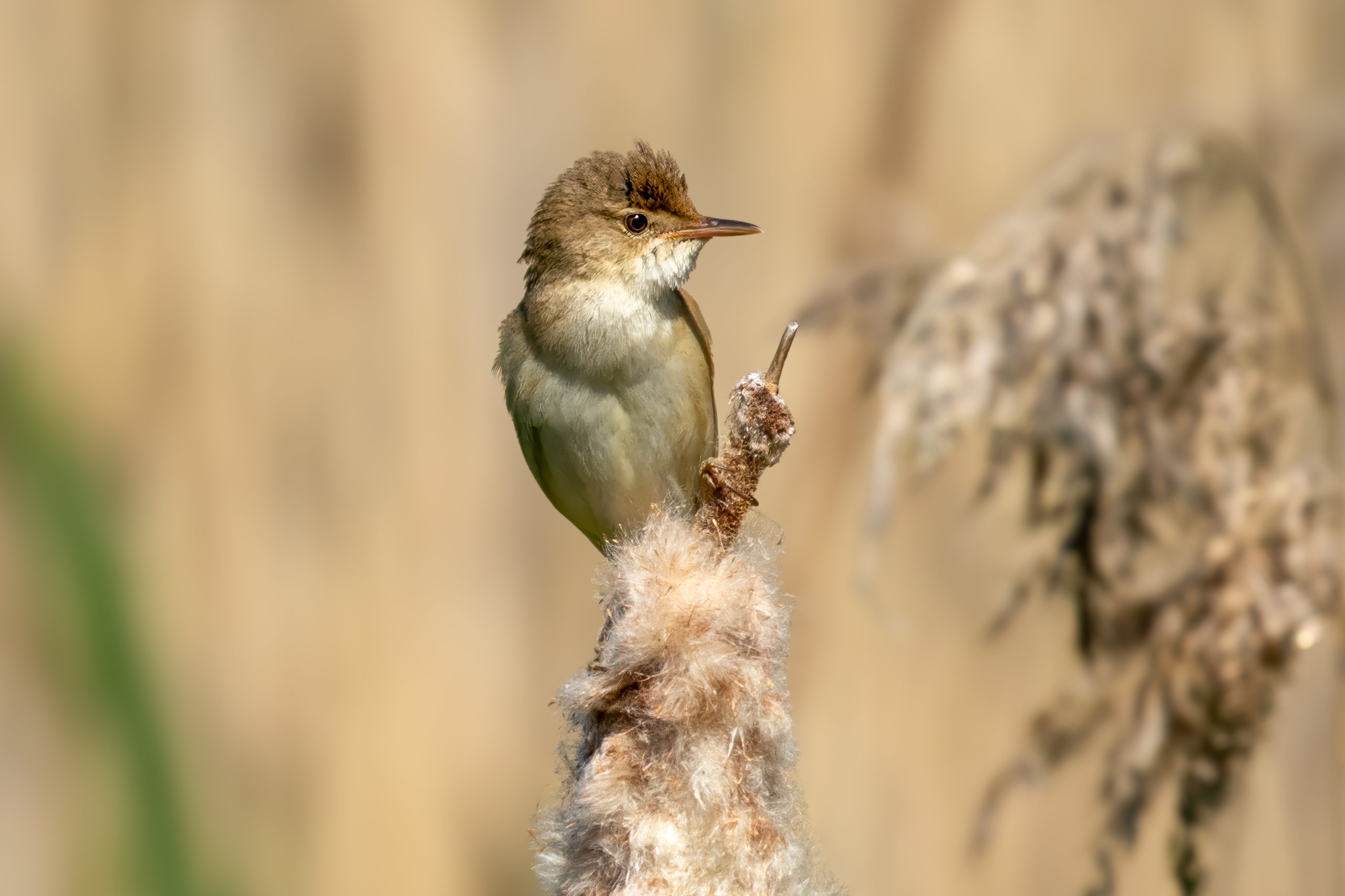Common Grasshopper Warbler
(Locustella naevia)
Description
The common grasshopper warbler (Locustella naevia) is a small secretive warbler that breeds in Eurasia. It migrates to West- and Northern Africa and India during the winter months. It grows to lengths of 12-12.5 cm (4.7-5 in). It is pale olive-brown, and it is paler on its underparts. Feathers on the back and wings have dark brown streaks. Tail is more reddish-brown. It has a faint pale eye streak behind the eye. The most distinguishing factor, however, is its song, which sounds a lot like a grasshopper, hence the name. The song can last from a few seconds to several minutes without pause. It can increase and decrease in volume as the bird sings.
Diet & habitat
The common grasshopper warbler prefers to live in grasslands, shrubs, reeds, and thickets where it can hide in the vegetation, quite often near water. It can also be found along forest edges and clearings. It feeds on insects, which it catches while moving through vegetation. It rarely flies and move mostly through vegetation or on the ground.
Nesting
Male and female build a nest together, which is hidden in vegetation such as tall grass, scrub, and reed beds. It is mostly made of grass, sedge and moss and size varies. Four to six eggs are laid, and they hatch after 14 days. The typically leave the nest after 12-13 days. A breeding pair may have two broods during one season. They mature after one year, and the oldest known individual became five years old.
Status
The common grasshopper warbler is seldom seen and very secretive. It is most often located by its tell-tale song, but even then, it is not easy to get a glimpse of it. However, this is a bird with a widespread distribution, and it is estimated to be between 3 to 6 million individuals in the wild. It is listed as least concern on the IUCN Red List. There are four subspecies, and the one occurring throughout most of Europe is called the Western grasshopper warbler (L. n. naevia).







